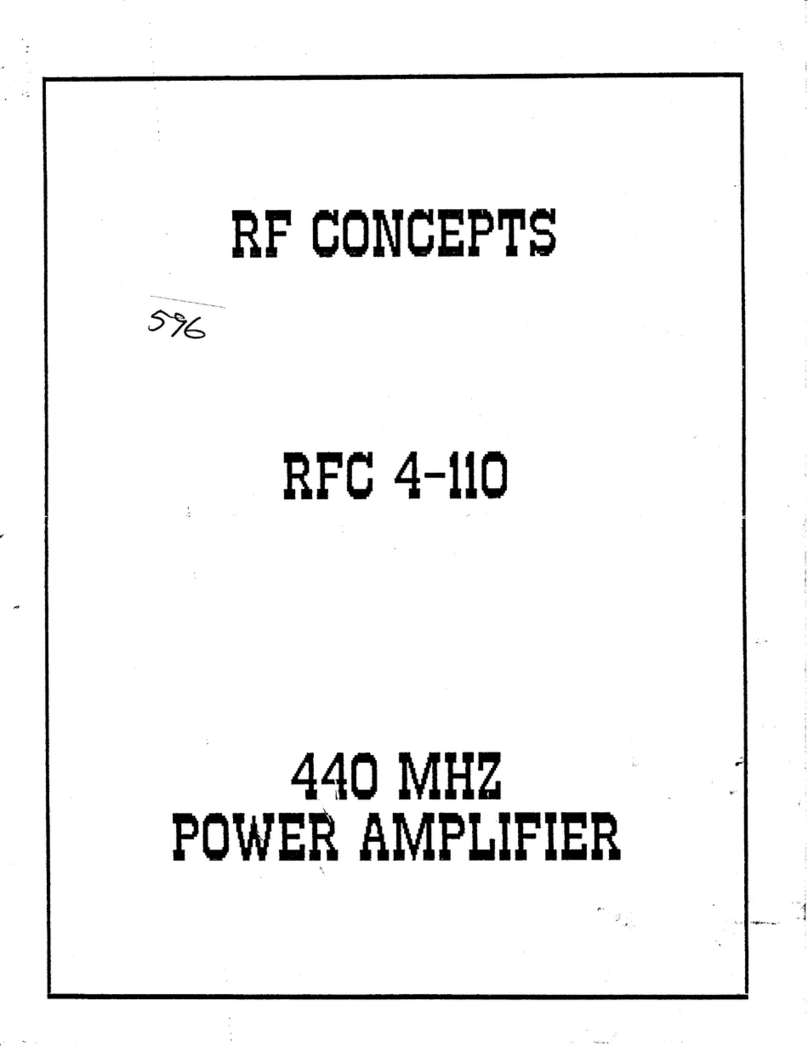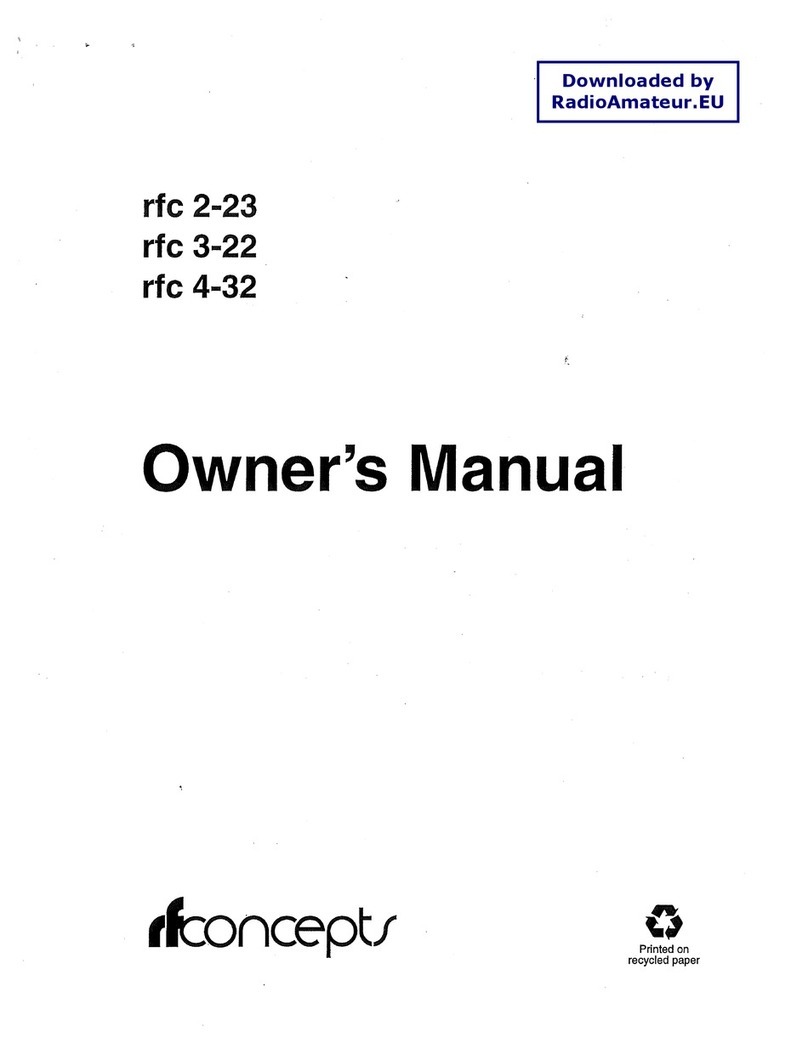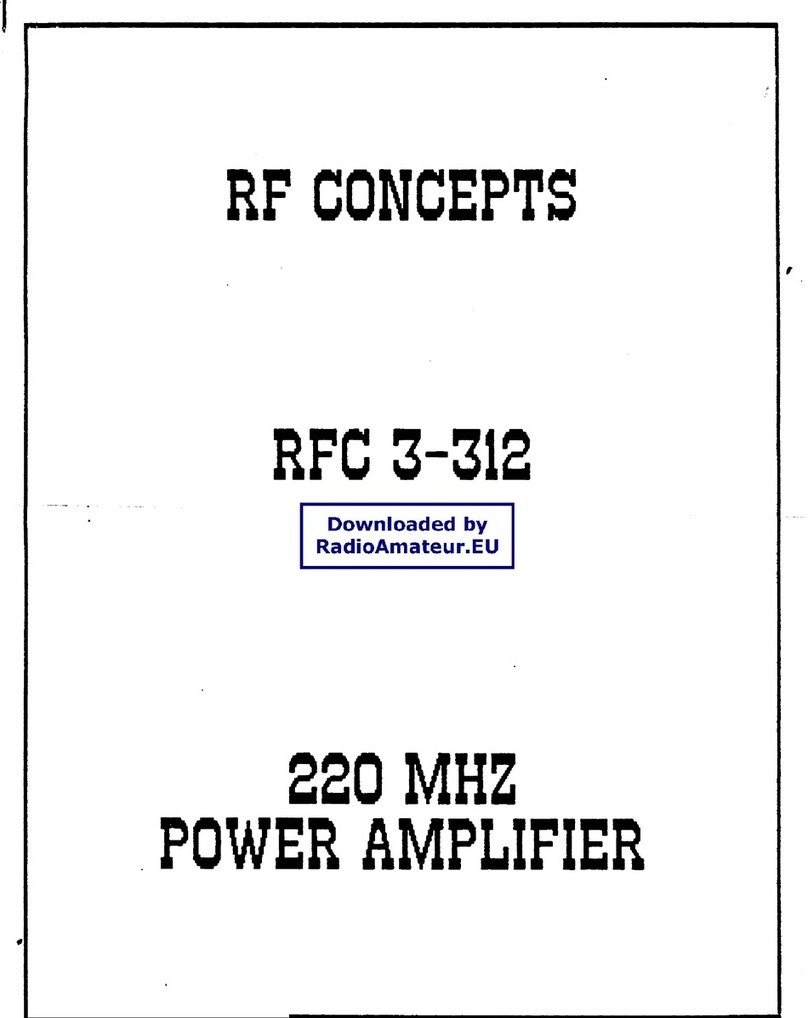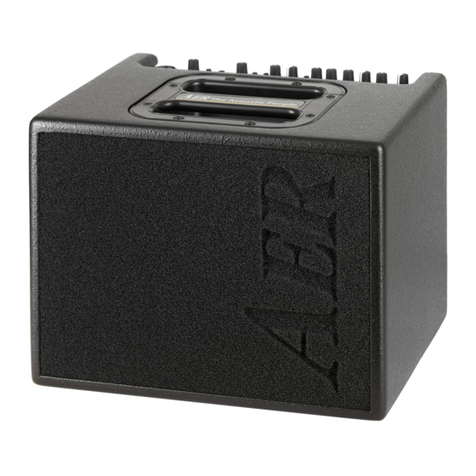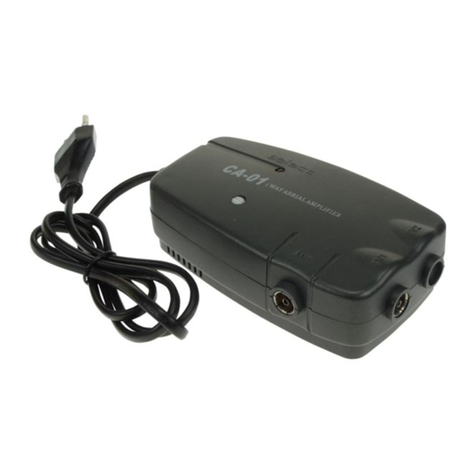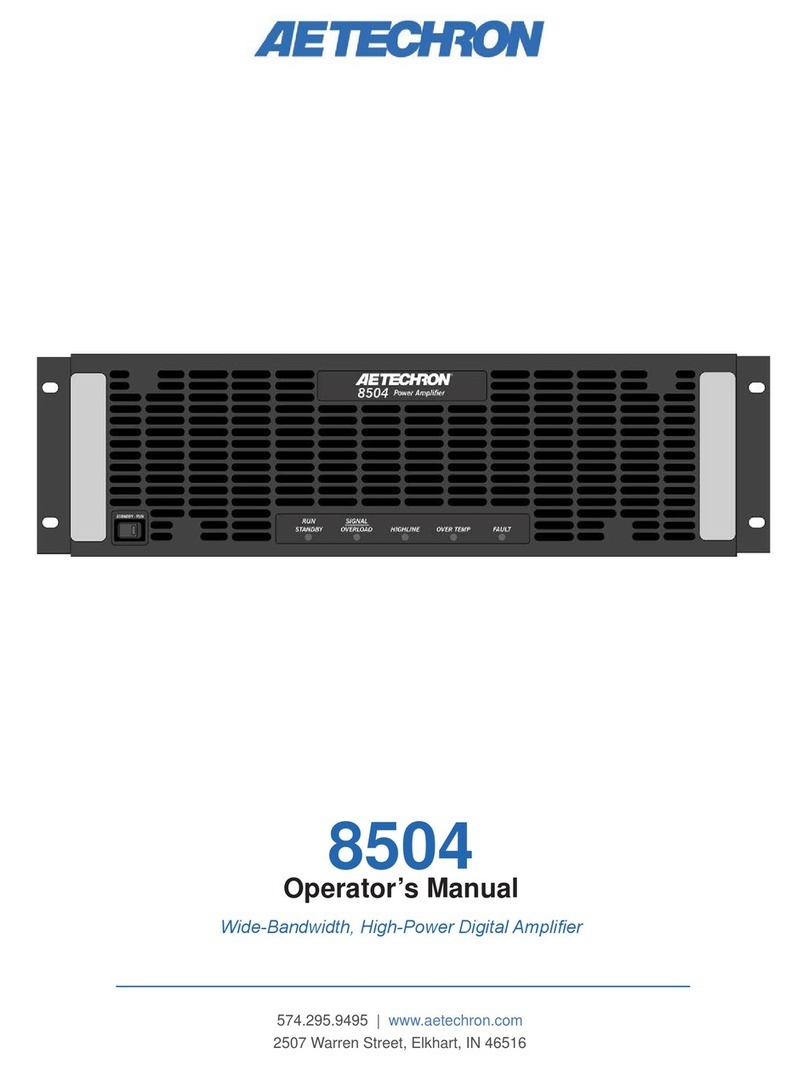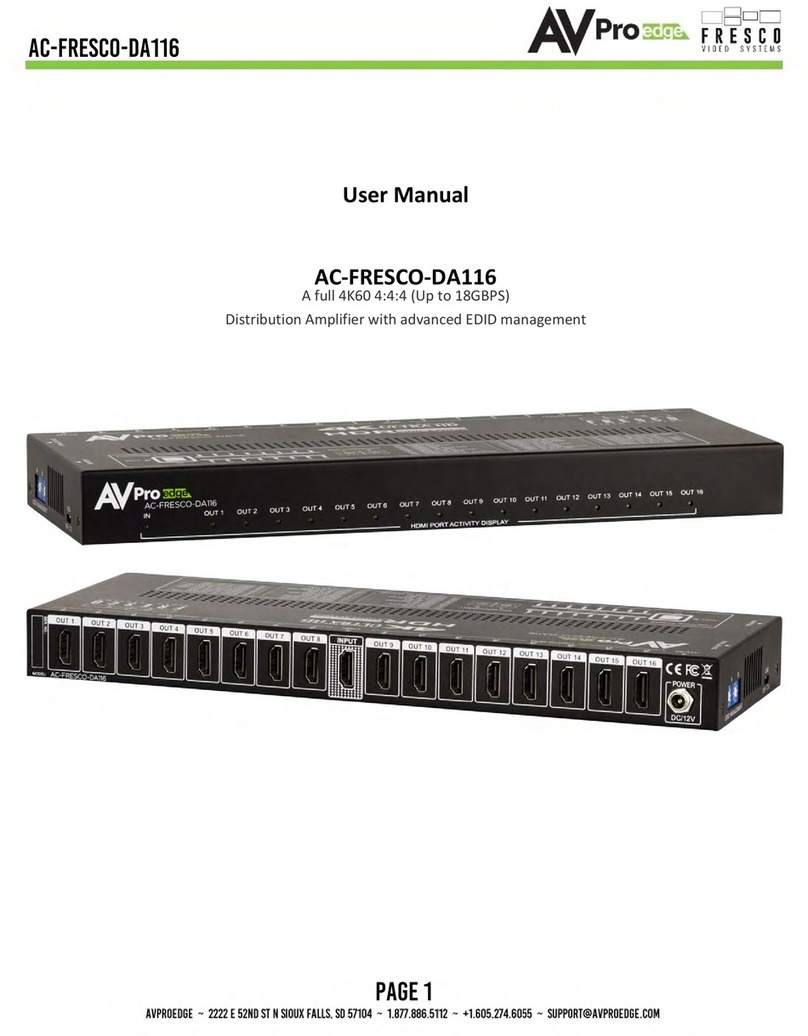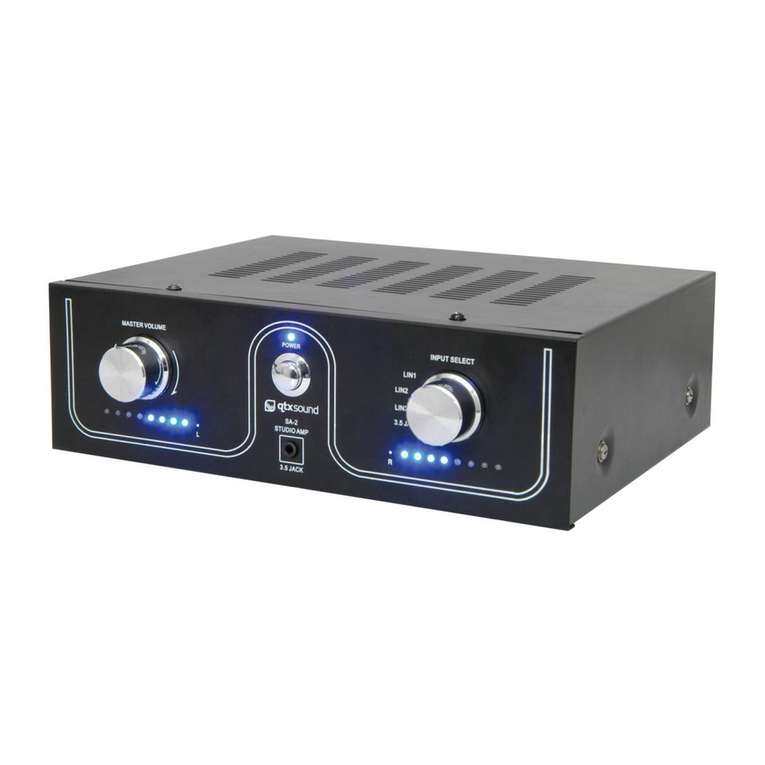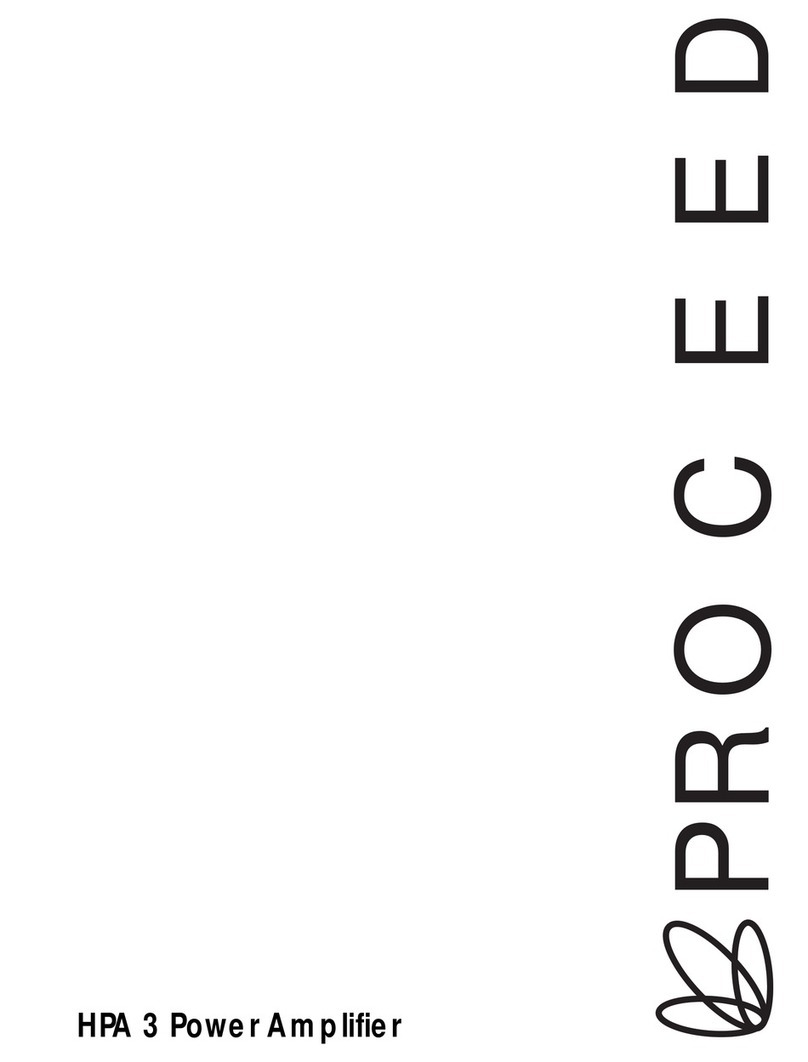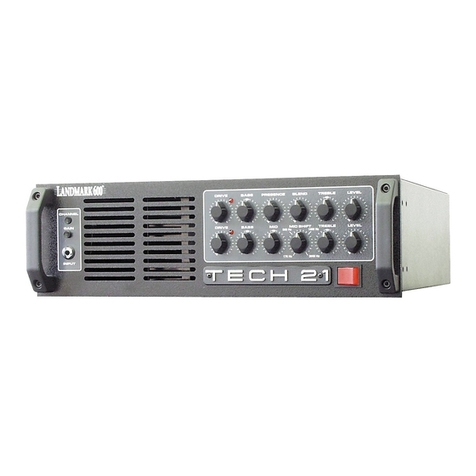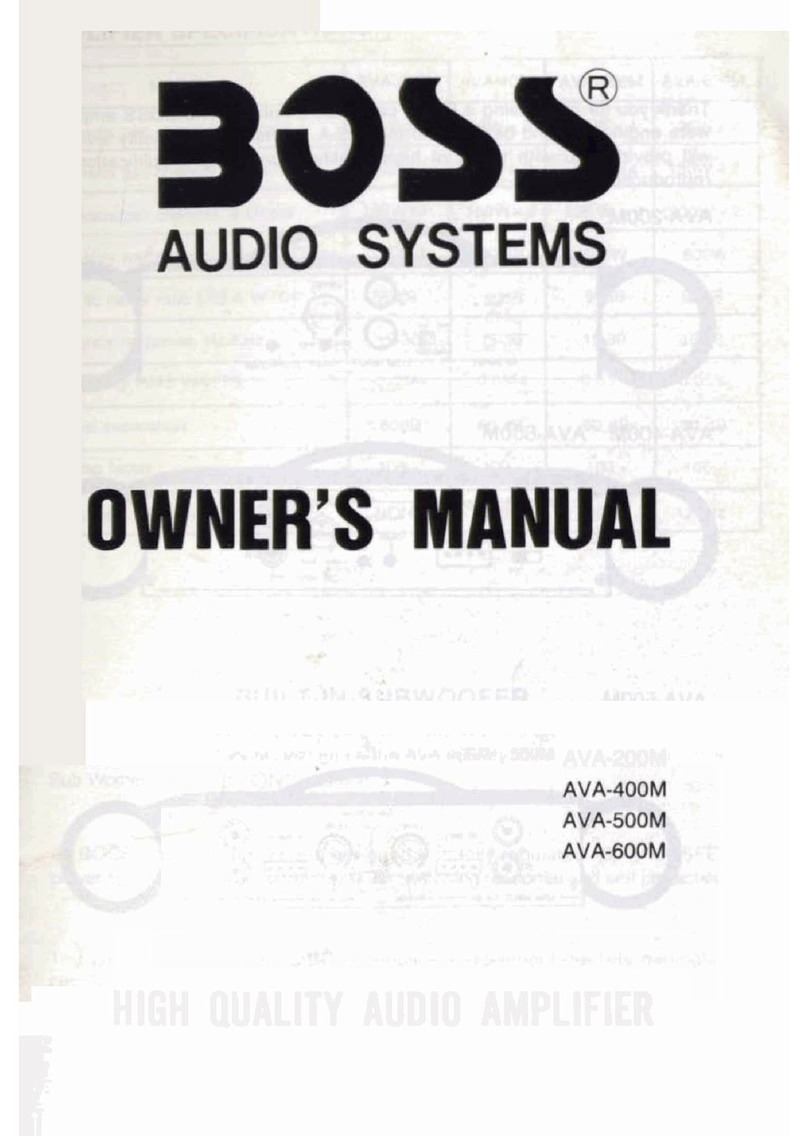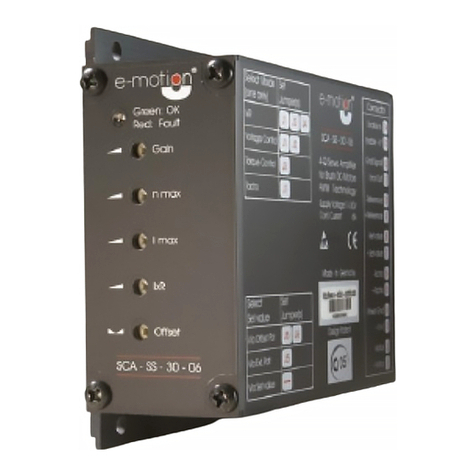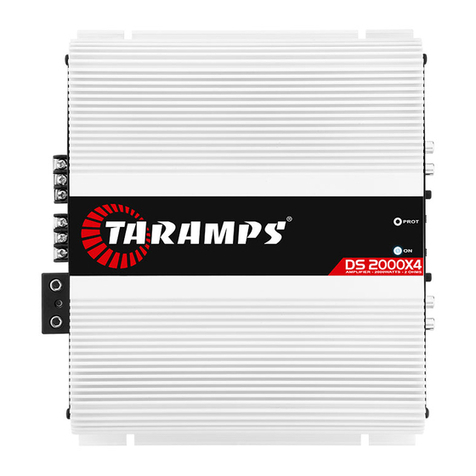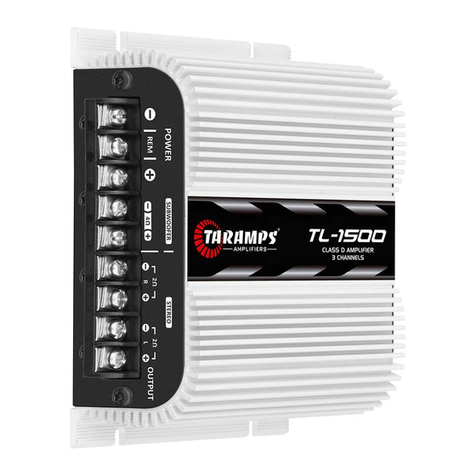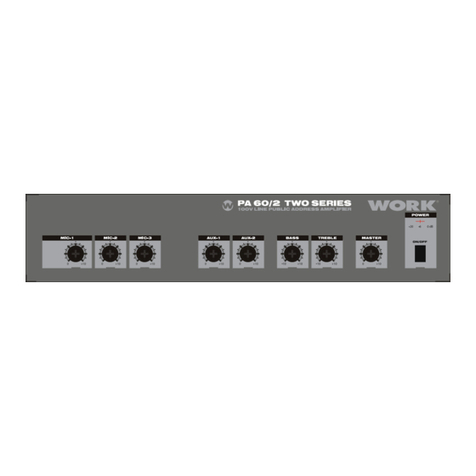RF Concepts 9500 User manual



RF Concepts
Alpha 9500 Linear Amplifier
User Manual
www.rfconcepts.com
Product Release 1
Document Issue 1.1
February 2010

Alpha 9500 Linear Amplifier User Manual RF Concepts
Product Release 1
DOCNUMBER 9500
Document Issue 1.1
Page ii February 2010
Alpha 9500 Linear Amplifier User Manual
Prepared for RF Concepts by MRH/JH/LJW.
To reach technical support or obtain copies of this document, go to
www.rfconcepts.com.
Copyright © 2010 RF Concepts, LLC. All rights reserved. Specifications
subject to change without notice.

RF Concepts, LLC
Product Release 1 Contents
DOCNUMBER 9500
Document Issue 1.1
February 2010 Page iii
Contents
1. Introduction . . . . . . . . . . . . . . . . . . . . . . . . . . . . . . . . . . . . 1-1
1.1 Product Description 1-1
1.2 Product Capabilities 1-2
1.3 Safety Considerations 1-2
1.4 Related Products 1-3
1.5 Assistance 1-3
2. Amplifier Components and Specifications . . . . . . . . . . . . . . . . . . . 2-1
2.1 Cathode (Input-Match) Board 2-2
2.2 Center-Partition Board 2-3
2.3 Controls and Display 2-3
2.4 Display Board 2-4
2.5 Firmware 2-5
2.6 Master-Control Board 2-5
2.7 Output-Tank Circuit 2-5
2.8 Power Connections 2-5
2.9 Power Supply 2-6
2.10 Tube and Tube Deck 2-8
2.11 Specifications 2-8
3. Preparing Your Station . . . . . . . . . . . . . . . . . . . . . . . . . . . . . . 3-1
3.1 Prepare Your Station 3-1
3.2 Limitations of Operation at 90–130 VAC 3-3
4. Setting Up the Amplifier . . . . . . . . . . . . . . . . . . . . . . . . . . . . . 4-1
4.1 Unpack the Amplifier and Transformer 4-1
4.2 Install the Transformer 4-3
4.3 Connect the Transformer 4-4
4.4 Connect the Cables 4-7
4.5 Set the Input Drive 4-10
4.6 Connect the Transceiver Keying Line 4-10
5. Operating the Amplifier . . . . . . . . . . . . . . . . . . . . . . . . . . . . . . 5-1
5.1 Principles of Operation 5-1
Basic operation 5-1
Operational states 5-2
Tuning modes 5-4
Faults 5-5
5.2 Start Up the Amplifier 5-5
5.3 Tune the Amplifier 5-7
(Optional) Changing antenna settings 5-7
Autotuning 5-8
Manual tuning 5-9

Alpha 9500 Linear Amplifier User Manual RF Concepts, LLC
Contents Product Release 1
DOCNUMBER 9500
Document Issue 1.1
Page iv February 2010
5.4 Program the Amplifier Memory 5-10
5.5 Operate the Amplifier 5-12
6. Operating the Amplifier from a PC . . . . . . . . . . . . . . . . . . . . . . . . 6-1
6.1 Set Up to Operate from a PC 6-1
6.2 Operate from the PC 6-2
Main window 6-3
Simulated front panel 6-4
Tools menu 6-4
Options menu 6-5
7. Maintaining and Upgrading the Amplifier . . . . . . . . . . . . . . . . . . . . 7-1
7.1 Clean the Chassis 7-1
7.2 Retune the Amplifier 7-2
7.3 Replace the Tube and Fuses 7-2
7.4 Upgrade Firmware 7-3
On the Primary Board 7-4
On the Secondary Boards 7-5
8. Diagnosing Faults . . . . . . . . . . . . . . . . . . . . . . . . . . . . . . . . . 8-1
8.1 Overview 8-1
8.2 Fault Codes and Resolutions 8-2
Fault code 1 8-2
Fault code 2 8-4
Fault code 3 8-5
Fault code 4 8-5
Fault code 5 8-6
Fault code 6 8-6
Fault code 7 8-6
Fault code 8 8-6
Fault code 9 8-7
Fault code 10 8-7
Fault code 11 8-8
Fault code 12 8-9
Fault code 13 8-9
Fault code 14 8-9
Fault code 15 8-10
Fault code 16 8-10
Fault code 17 8-10
Fault code 18 8-10
Fault code 19 8-11
Terminology Term-1
Schematics Schem-1

RF Concepts, LLC
Product Release 1 List of Procedures
DOCNUMBER 9500
Document Issue 1.1
February 2010 Page v
List of Procedures
Procedure 3-1, “Prepare your station,” page 3–1
Procedure 4-1, “Unpack the amplifier and transformer,” page 4–1
Procedure 4-2, “Install the transformer,” page 4–3
Procedure 4-3, “Connect the transformer,” page 4–4
Procedure 4-4, “Connect the cables,” page 4–7
Procedure 4-5, “Connect the transceiver keying line,” page 4–10
Procedure 5-1, “Start up the amplifier,” page 5–5
Procedure 5-2, “(Optional) Change the antenna settings,” page 5–7
Procedure 5-3, “Autotune the amplifier,” page 5–8
Procedure 5-4, “Manually tune the amplifier,” page 5–9
Procedure 5-5, “Program the amplifier memory,” page 5–11
Procedure 5-6, “Operate the amplifier,” page 5–12
Procedure 6-1, “Set up to operate from a PC,” page 6–1
Procedure 7-1, “Clean the amplifier,” page 7–1
Procedure 7-2, “Replace the tube and fuses,” page 7–3
Procedure 7-3, “Upgrade firmware on the primary board,” page 7–4
Procedure 7-4, “Upgrade firmware on the secondary boards,” page 7–7

Alpha 9500 Linear Amplifier User Manual RF Concepts, LLC
List of Procedures Product Release 1
DOCNUMBER 9500
Document Issue 1.1
Page vi February 2010

RF Concepts, LLC
Product Release 1 1
DOCNUMBER 9500
Document Issue 1.1
February 2010 Page 1–1
1 Introduction
1.1 Product Description 1–1
1.2 Product Capabilities 1–2
1.3 Safety Considerations 1–2
1.4 Related Products 1–3
1.5 Assistance 1–3
Congratulations on your purchase of a professional-quality Alpha 9500
linear amplifier.
1.1 Product Description
The Alpha 9500 (see Figure 1-1) is an self-contained autotune HF linear
power amplifier. It is capable of continuous operation at 1500 W peak
power output on single sideband (SSB), keyed continuous wave (CW),
slow-scan television (SSTV), radioteletype (RTTY), digital modes or
FM, with no time limit.
CAUTION
!
CAUTION! Study this manual carefully before operating your
amplifier for the first time. In particular, it is extremely important that
you thoroughly review the installation and operation sections. Failure
to do so could result in serious damage not covered under warranty.

Alpha 9500 Linear Amplifier User Manual RF Concepts, LLC
Introduction Product Release 1
DOCNUMBER 9500
Document Issue 1.1
Page 1–2 February 2010
11
1Figure 1-1 Alpha 9500
1.2 Product Capabilities
Product capabilities include:
•Continuous RF output. The Alpha 9500 is capable of 1.5 kW
continuous RF output on all commonly used modes and on any
authorized amateur frequency from 1.8 to 29.7 MHz (other than the
60-meter band).
•Compatibility with popular amateur transceivers and exciters. The
Alpha 9500 requires approximately 50-65 W peak RF drive for 1.5-
kW output.
•Capable of full CW break-in, QSK, and all digital modes when used
with any appropriate transceiver.
•Built-in protective functions. The control system incorporates
protective functions that minimize the probability of accidental
damage to the amplifier or its power tubes. In most cases, when one
of the protective functions is tripped, the amplifier goes to standby.
•USB and serial interface allow for remote operations, diagnostics,
and firmware upgrades.
1.3 Safety Considerations
•Locate the Alpha 9500 where there is good air circulation all around
and on top of the cabinet. The unit may become hot during operation.

11
1
DOCNUMBER 9500
Document Issue 1.1
February 2010 Page 1–3
RF Concepts, LLC Alpha 9500 Linear Amplifier User Manual
Product Release 1 Introduction
•Use proper lifting techniques and two people when moving the Alpha
9500. The Alpha 9500 weighs approximately 69 pounds when the
transformer is installed.
•Although the Alpha 9500 meets international safety standards and
FCC regulations, remember that the equipment works with high
voltages that can be LETHAL!
This operating manual holds information, cautions, and warnings that you
must follow to ensure safe installation and operation. Read Chapter 1
before attempting to unpack or operate the Alpha 9500. Failure to perform
procedures properly may result in amplifier damage, fire hazard, or
electric shock.
!
IMPORTANT •Never open the amplifier case without unplugging the unit
from the wall outlet.
•Never stick objects into holes in the case.
•Never touch an antenna during transmission.
•Never attempt to turn on the amplifier without the cover
securely in place (all attachment screws reinserted).
•Never turn the amplifier back on after a hard fault without
waiting at least 20 seconds.
•Never press the ON (AMP) button after the amplifier faults to
power off.
•Never allow liquids to enter the amplifier through the cover
holes.
•Never cover or obscure the exhaust holes in the cover of the
amp.
1.4 Related Products
Other products available to enhance your use of the Alpha 9500 include:
•Alpha 2100 full-1500 W-rated 50-ohm dummy loads
•Alpha 4500 series SWR meters and wattmeters
For more information, go to www.rfconcepts.com or call 303-473-9232.
1.5 Assistance
Technical assistance from RF Concepts is available from several sources.

Alpha 9500 Linear Amplifier User Manual RF Concepts, LLC
Introduction Product Release 1
DOCNUMBER 9500
Document Issue 1.1
Page 1–4 February 2010
11
1•Go to our website at www.rfconcepts.com and click Support. On
this site you can get the following assistance:
•FAQs
•Legacy equipment information
•Manuals
•Repair information
•Software downloads
•Tech tips
•Technical support
•E-mail us at [email protected].
•Fax us at 303-473-9660.
•Phone us at 303-473-9232.

RF Concepts, LLC
Product Release 1 2
DOCNUMBER 9500
Document Issue 1.1
February 2010 Page 2–1
2 Amplifier Components and Specifications
2.1 Cathode (Input-Match) Board 2–2
2.2 Center-Partition Board 2–3
2.3 Controls and Display 2–3
2.4 Display Board 2–4
2.5 Firmware 2–5
2.6 Master-Control Board 2–5
2.7 Output-Tank Circuit 2–5
2.8 Power Connections 2–5
2.9 Power Supply 2–6
2.10 Tube and Tube Deck 2–8
2.11 Specifications 2–8
The Alpha 9500 uses a single 3CX1500 (8877) high-mu external-anode
triode ceramic tube for amplification. The main power supply is an
unregulated transformer/rectifier/capacitor power supply for the high-
voltage (HV) and heater circuits. All other power supplies are regulated.
The biasing and tank circuits are similar in most respects to those of the
Alpha 9500’s predecessor, the Alpha 77. The unit has thoroughly modern
computer-controlled power supply and control circuitry. Extensive safety
measures protect the amplifier against most off-nominal conditions. It has
USB and RS-232 interfaces to aid in remote operation. All front-panel
features are accessible via these interfaces.
There are six main circuit boards in the amplifier. Communications
among these is via an I2C bus.
The amplifier front and back are shown below (see Figure 2-1 and
Figure 2-2). Amplifier components are listed alphabetically and described
below.

Alpha 9500 Linear Amplifier User Manual RF Concepts, LLC
Amplifier Components and Specifications Product Release 1
DOCNUMBER 9500
Document Issue 1.1
Page 2–2 February 2010
22
2
Figure 2-1 Amplifier front and interior
Figure 2-2 Amplifier back
2.1 Cathode (Input-Match) Board
The cathode board, housed in the tube deck, consists of a set of Pi filters
controlled by a set of five relays that are enabled based on the band-switch
setting.

22
2
DOCNUMBER 9500
Document Issue 1.1
February 2010 Page 2–3
RF Concepts, LLC Alpha 9500 Linear Amplifier User Manual
Product Release 1 Amplifier Components and Specifications
2.2 Center-Partition Board
The center-partition board contains the RF decoupling circuit on the B+
line as well as the crowbar safety circuit. When you remove the top cover
of the Alpha 9500, the spring metal of this safety device shorts out the B+
line.
2.3 Controls and Display
The Alpha 9500 controls enable you to adjust and monitor the amplifier
as needed (see Figure 2-3).
!
IMPORTANT Note that the front panel has, in the upper-right corner, a 7-segment
LED display. The display contains 4 digits.
The buttons below the display control what kind of value is displayed:
FLT, Fwd, Ig, Ip, SWR, or Vp.
Figure 2-3 Amplifier controls
BAND
MEMORY
SAVE RCL DEF 1 2 AUTO
TUNE LOAD ANTENNA SELECT
1.8 3.5 7 10 14 18 21 24 28
12345
1234
RF Power kW
SWR
Grid Current mA
Plate Current Amps
Plate Voltage kV
Gain
0 0.1 0.3 0.6 1.0 1.5 2.5
1 1.5 2 3 >10
0 50 100 150
0 1.0 1.5
02314
10 30 50
MICROPROCESSOR CONTROLLED HFLINEAR AMPLIFIER
ALPHA
Fwd IpVpIg SWR FLT
DIM SND PEP DEL
OPER STBY ON/OFFON
ANT SELAMP
SEGMENT
9500
Table 2-1 Amplifier Buttons (listed alphabetically)
Button Purpose
ANTENNA SELECT Determines which one or two of the four antenna output ports to use.
BAND Selects an amateur band, designated in megahertz (MHz).
DEL Displays the delivered power from the amplifier to the selected antenna
port in watts (W).
DIM Controls the brightness of the display LEDs.

Alpha 9500 Linear Amplifier User Manual RF Concepts, LLC
Amplifier Components and Specifications Product Release 1
DOCNUMBER 9500
Document Issue 1.1
Page 2–4 February 2010
22
2
2.4 Display Board
The display board is the largest board in the amplifier and spans the entire
inside front panel. It has three microcontrollers, one each to control the
stepper motors; the LEDs and 7-segment display and push buttons; and
the sound controller.
FLT Sets the 7-segment display to show the last fault. Also loads new
firmware.
Fwd Sets the 7-segment display to show forward power in W.
GAIN Displays the gain in decibels (dB).
GRID CURRENT Displays the grid current in milliamperes (mA).
Ig Sets the 7-segment display to show grid current in mA.
Ip Sets the 7-segment display to show plate current in mA.
LOAD Controls the load capacitor.
MEMORY Selects one of three sets of segment memories:
•DEF — factory-default settings
•1, 2— User 1 and User 2 memories
•AUTO — autotune
ON (AMP) Turns the amplifier tube and voltage on.
ON/OFF (ANT SEL) Turns antenna select on; the amplifier tube is not on.
OPER Sets the amplifier to the operate position.
PEP Toggles between peak power (PEP) and average power.
PLATE CURRENT meter Displays the plate current in milliamperes (mA).
PLATE VOLTAGE meter Displays the plate voltage in volts (V).
RCL (Currently nonfunctional)
RF POWER kW meter Displays the forward power in W.
SAVE Saves the current settings.
SEGMENT Selects different frequencies within each band.
SND Controls the sound volume (not yet implemented).
STBY Sets the amplifier to standby (bypass).
SWR meter Sets the 7-segment display to show SWR.
TUNE (UP or DOWN) Controls the tune capacitor.
Vp Sets the 7-segment display to show plate voltage in V.
Table 2-1 Amplifier Buttons (listed alphabetically) (Continued)
Button Purpose

22
2
DOCNUMBER 9500
Document Issue 1.1
February 2010 Page 2–5
RF Concepts, LLC Alpha 9500 Linear Amplifier User Manual
Product Release 1 Amplifier Components and Specifications
2.5 Firmware
The Alpha 9500 firmware controls and implements most amplifier
features and functions.
You can upgrade the master firmware via a serial or USB connection to a
Microsoft Windows PC. For information, see Chapter 7, “Maintaining
and Upgrading the Amplifier.”
2.6 Master-Control Board
The master-control board monitors all critical voltages and currents in the
amplifier, as well as the input power and output forward and reflected
power. It uses these converted values to control the amplifier’s operation
and to send data to the front panel, so that the correct LEDs are lit and the
stepper motors move to the correct positions. A standard 9-pin RS-232
serial port is provided for control and monitoring and is found on the back
of the Alpha 9500. A USB port is also provided. Either port may be used,
but only one may be active at any one time.
The amplifier automatically senses when a PC is attached to the USB port,
and uses that port. If nothing is connected to the USB, the amplifier
automatically switches back to the RS-232 serial port.
2.7 Output-Tank Circuit
The output-tank circuit provides reliable high-efficiency, low-distortion
performance in a very compact volume. The basic topology is “pi-L”,
which provides harmonic attenuation adequate to meet the requirements
of all countries globally that permit power outputs of 1500 W.
Band switching is under automatic control, accomplished by a 4-wafer
band switch. These wafers are used as multifunction tap selectors, which
simultaneously select band taps on the inductors and include varying
amounts of capacitance to provide band spread on the tune and load
capacitors. The wafers are in the RF tank area. The band-switch position
is controlled by a stepper motor in the front subchassis.
2.8 Power Connections
When the Alpha 9500 is powered up, it measures the line voltage and
chooses, then sets the appropriate tap setting for the transformer primary.
After it is powered up, it does not reset the tap. The amplifier can be set

Alpha 9500 Linear Amplifier User Manual RF Concepts, LLC
Amplifier Components and Specifications Product Release 1
DOCNUMBER 9500
Document Issue 1.1
Page 2–6 February 2010
22
2
to override autotaps election and use any primary tap; it may be useful to
do so if your line voltage is unsteady or on the edge of a tap setting. For
more information, contact RF Concepts technical support.
Figure 2-4 Primary connections
2.9 Power Supply
The power supply has two major sections: a switch-mode supply for the
logic circuitry and a conventional transformer supply for all other
voltages.
When the amplifier is plugged into the AC line, the switch-mode supply
is always on and all the microprocessors are active. It is usual for some of
the front panel LEDs to blink momentarily when the unit is first plugged
in.
The remaining voltages are produced by the mains and HV boards,
described below.

22
2
DOCNUMBER 9500
Document Issue 1.1
February 2010 Page 2–7
RF Concepts, LLC Alpha 9500 Linear Amplifier User Manual
Product Release 1 Amplifier Components and Specifications
Mains Board
Figure 2-5 Mains board
Power-supply functions are split between the mains board and the HV
board. The mains board deals mostly with the primary side of the
transformer. The various taps for the transformer primary are routed
through this board and so is the AC line input. Relays on the mains board
connect the AC line to the appropriate taps on the transformer primary.
When the ON (AMP) button is pressed, the microprocessor on the mains
board samples the line voltage and determines which tap to select. That
voltage tap remains selected until the amplifier is turned off, and does not
change even if the line voltage fluctuates.
If you install your amplifier in a location where the line voltage is not
steady, you can force the tap selection via the serial or USB port. For
information on how to force tap selection, contact RF Concepts technical
support.
Also on the mains board is a step-start circuit. This circuit consists of a
relay and a resistor, which are time-sequenced to limit the inrush current
into the amplifier when it is first turned on.

Alpha 9500 Linear Amplifier User Manual RF Concepts, LLC
Amplifier Components and Specifications Product Release 1
DOCNUMBER 9500
Document Issue 1.1
Page 2–8 February 2010
22
2
HV Board
The main high voltage for the amplifier is created on the HV board using
a full-wave bridge rectifier and a bank of capacitors. This power supply
has two 10-ohm resistors, one in the positive (B+) lead and one in the
negative return to the tube cathode. This combination of resistors limits
the surge current in the case of a B+ arc.
When the power-supply current exceeds about 2.5 amps, a latching relay
opens the coil circuit of the mains tap relays on the mains board, causing
the amplifier to go to the power-off state. This hard-fault circuit operates
independently of microprocessor control.
All power-supply filter capacitors on this board have bleeder resistors that
discharge the capacitors in less than 60 seconds. If you must work on this
board, confirm the discharged condition with a voltmeter, due to the
remote possibility of bleeder resistor failure.
2.10 Tube and Tube Deck
The Alpha 9500 uses a single 8877 triode tube. The tube operates well
within its published ratings. It is operated in Class AB1, with a plate
voltage of 3300 V (nominal, full output, key down) and a cathode voltage
of 9.4 V.
The tube deck is a mechanical assembly that houses the tube socket and
the cathode (or input match) printed circuit board (PCB).
A temperature sensor mounted on the cathode PCB measures the
temperature of the air immediately below the tube socket. This
temperature measurement is used by the master controller as part of the
fault-detection software.
2.11 Specifications
The Alpha 9500 linear amplifier specifications are as follows.
Table 2-2 Alpha 9500 linear amplifier specifications
Parameter Value
Frequency coverage All amateur frequencies in the range 1.8–29.7 MHz
Power output 1500 Watts minimum
3rd Order IM <–30 dBc
SWR tolerance 3:1
Drive power 65 Watts nominal
Tube 3CX1500/8877
This manual suits for next models
1
Table of contents
Other RF Concepts Amplifier manuals
